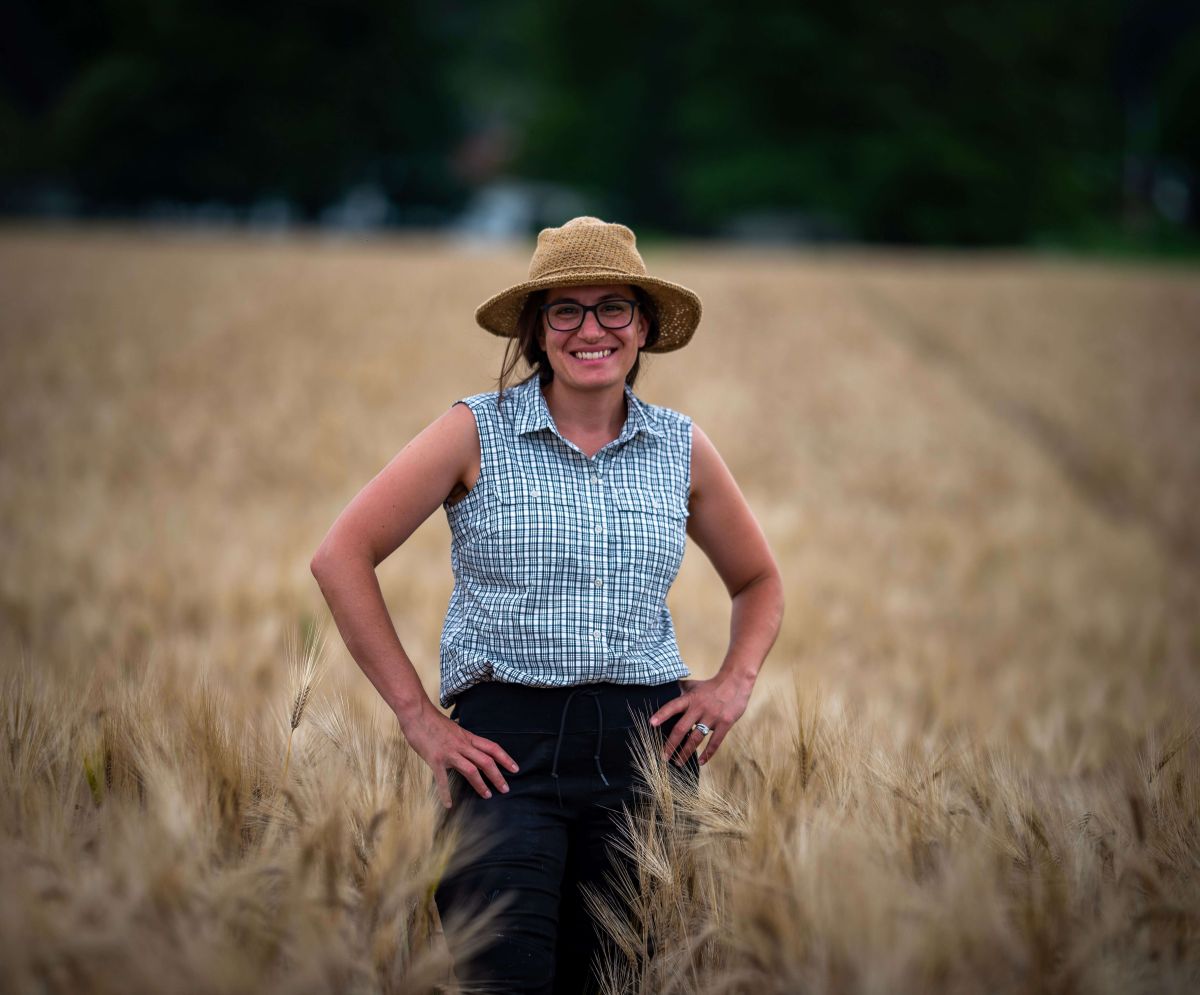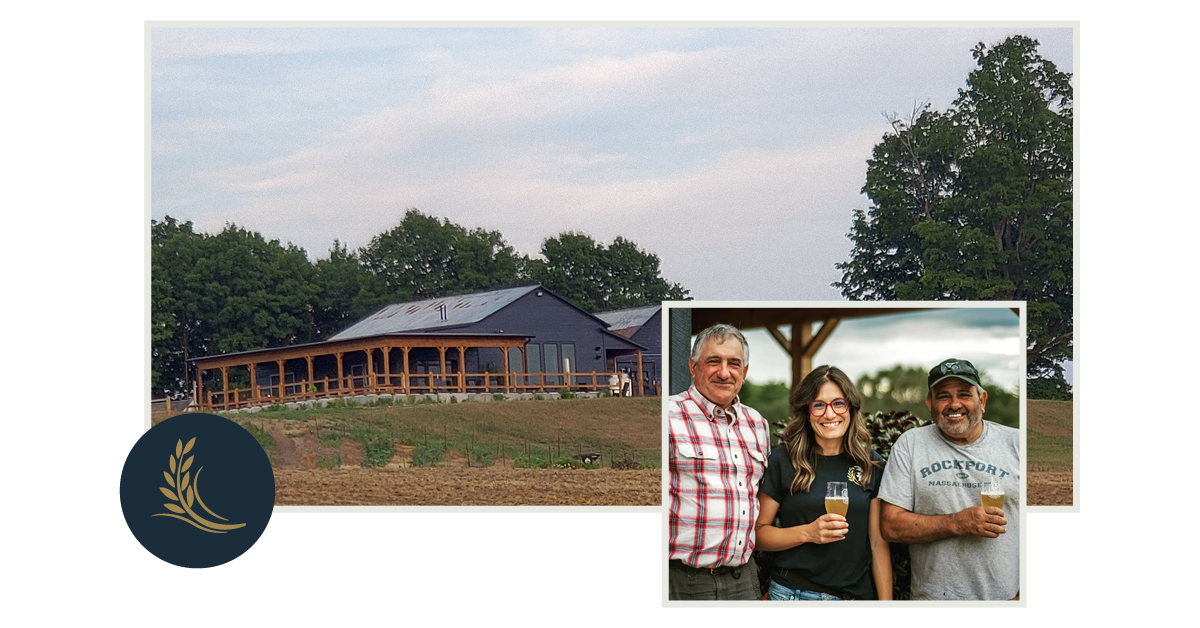

written by Megin Potter | Photos Provided
Unlike the more established farmers in the area (who have been here for hundreds of years), Rachel McDermott is a second-generation farmer, and her son the third. In 1983, Rachel’s father, Jim, and uncle, Bob Czub Jr. founded West Wind farm in Schaghticoke. It was a sprawling operation that by the 1990s had grown to harvest as much as 2,500 acres of corn, soybeans, hay, and straw annually.
“What I learned from them was how to fix things that are broken (without having to call an expert) and to work smarter, not harder,” she said.
In 2016, Rachel, who spent seven years working as an investment banker, returned to the area from New York City to find the family farm in a tough position. They had significant investments in assets that were solely aligned with a growing land base (planting and harvesting equipment, tractors, drying and storage facilities) but the available land base was shrinking. “Commodity crops have no value unless sold in huge quantities – I’m talking hundreds, thousands, even millions of tons,” she said. To get to millions of tons of corn or soybeans, you need tens of thousands of acres of cropland – not something that Saratoga, the fastest growing county in New York State, has in abundance.
Facing pressure from residential and solar development, Rachel needed to find another way for the business to grow.
Introducing the Renaissance of Small Grains
Once considered the breadbasket of Colonial America, New York’s grain economy collapsed with the completion of the Erie Canal in 1825. Transforming transportation expanded the population westward, and with them went the amber waves of grain.
Grain production centralized in the Midwest but since 2017 Rachel has been among the new wave of farmers, working with Cornell University’s breeding program to bring the more lucrative small grain farming back to Upstate New York.
Dancing Grain’s estate-grown malting barley, distiller’s rye, wheat, and corn, as well as the herbs and flowers used in their farm-to-glass craft beers, are grown using sustainable farming methods. The beers have been enjoyed at their on-site brewery since 2022 - empowering the region to flourish economically, socially, and culturally.
Coming to Fruition
Dancing Grain worked through the research and development stage of growing grain in the northeast climate. Like many other small farmers, they face their fair share of challenges everyday.
To create data where none existed, Dancing Grain trialed dozens of grains and lost as much as 80 percent of their crop. This meant growing and producing yields with non-GMO seed, despite unpredictable changes in temperature, precipitation, and humidity. What they plant in 2023 is what they’ll be using in their beer in 2025 and with fluctuations in malt flavor year to year, Head Brewer, Chris “Duffy” Dufrain, must adjust their recipes accordingly to continue producing high-quality and competitive craft beers.
Outside of Dancing Grain, most craft beers are made with ingredients grown outside of the United States or from the West Coast, but rarely with predominantly local ingredients. Dancing Grain crafts their IPA’s, Lagers, Pale Ales, Sours, Stouts, and Porters with hyper-local ingredients and 100% New York State grown hops.
“We’re up against a much more difficult task than other breweries. No other brewery in the area is doing what we’re doing,” said Rachel. “It takes a devotion to craft beer and a higher amount of thought, emphasis, analysis, and capital risk per pint.”
Understanding craft beer chemistry and balancing that bill, Dancing Grain has created a line of successful brews including their best-selling Crop Top IPA and Tractor Time American Lager.
“It’s high-risk but also high-reward,” adds Rachel. “This is what beer made in Saratoga County tastes like."

Shepherds of the Fields
Farming is more than simply monetizing the land, it’s about protecting the soil, and for Dancing Grain that means utilizing cover crops.
“Our primary conservation method is cover-cropping,” said Rachel. “It improves soil health and fertility while reducing erosion and runoff.” With crops like clover and sunflower planted in the fields, less fertilizer is needed, reducing the farm’s reliance on chemicals while increasing the sustainability of their financial position.
Working with organizations including Saratoga Soil and Water, and the USDA’s Natural Resources Conservation Service, Dancing Grain has extended conservation measures to include setting aside a few acres as wildflower habitat. This helps support birds, butterflies, and other pollinators while increasing the organic matter in the soil and creating useful carbon sinks.
“Cover crops, including wildflowers, help to sequester carbon while reducing erosion and improving soil structure. When a field is left fallow (meaning nothing is grown in it) we aren’t able to pull carbon out of the air,” explains Rachel. Another eco-conscious practice she hopes Dancing Grain will be expanding in the future: composting spent grains mixed with horse manure. A continuously growing product of Saratoga’s horse industry she says would be a huge benefit to farmers when sold commercially.
But aside from regenerative agricultural practices, Rachel says that committing to local-only ingredients creates a financially and environmentally sustainable brewing model that can’t be matched by businesses engaging in imported ingredients.
“It’s simple, if more breweries buy more NYS grown ingredients, then they’re helping to keep small family farms farming. We lose 54 acres of farmland a day, can we really afford to buy ingredients from overseas?”
Reaping the Harvest
There are extra challenges being a woman in the predominantly male farming and beer industries, said Rachel.
“It’s still gut-wrenching to think of how our son was with us during the start-up phase of the business but how hard it was to spend time with him,” she said. Building the business while pregnant and living in a camper in the parking lot during the pandemic, Rachel juggled the strain of being a new mother with running the farm, renovating the farmhouse and agricultural buildings, and opening the brewery.
Today, she’s proud of what she has built; beers like Gaia’s Blessing (a collaboration with Whitman Brewing made with girl-powered pilsner malted by Andrea Stanley of Valley Malt in Hadley, Mass.), and seeing women who are under similar constraints immerse themselves in the farm setting, enjoying #brewsandviews.
Rachel’s biggest achievement is the environment she’s created for her customers.
“We’ve created a space where everyone is welcome. Where you don’t have to choose between being a career-driven woman or mother, wife, daughter, sister, friend, dog mom, whatever. A space where we literally celebrate everything you are and everyone who supports you being you, because that’s what our customers are doing when they’re here. They’re supporting the idea that if we invest in our farms and small local businesses our community will be healthier, happier, and we can make more memories together.”
Dancing Grain offers a huge variety of very fresh craft beers as well as local wines, hard cider, and non-alcoholic beverages. Guests can enjoy live music most Friday and Saturday evenings, and food trucks every weekend now through October.
In July, pick your own bouquets of zinnias, dahlias, and sunflowers are available, and in the fall their sunflower festival offers an opportunity to immerse yourself in their fields.
“We educate people about the beers so they have the opportunity to get excited about something they haven’t tried before in a setting they wouldn’t expect it,” said Rachel.
This summer, the Dancing Grain Founder’s Club is launching to give the lifetime benefit of a piece of paradise to even more people.
For more information, go to dancinggrain.com.